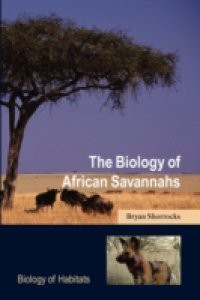Savannah habitats comprise an ecologically important but ultimately fragile ecosystem. They constitute one of the largest biomes on Earth, covering about twenty percent of the land surface, and can be simply described as tropical and subtropical grasslands with scattered bushes and trees. Most savannahs occur in Africa (with a smaller amount in South America, India and Australia), which is the region that this book concentrates on. Savannahs form a rich mosaic ofdiverse ecosystems, and The Biology of African Savannahs offers a concise but comprehensive introduction to their ecology. It describes the major plants (grasses, and trees such as Acacia) and animals (mainly large mammals) that live in this habitat, and examines the biological and ecological factorsthat influence their population size, interactions (such as predation) and community composition. Conservation issues such as climate change, hunting, and conflict between wildlife and domestic animals are also discussed. This accessible text is suitable for both senior undergraduate and graduate students taking courses in savannah and tropical ecology as part of a wider ecology and/or conservation biology degree programme. It will also be of relevance and use to the many professional ecologists and conservation practitioners requiring a concise but authoritative overview of the topic.

